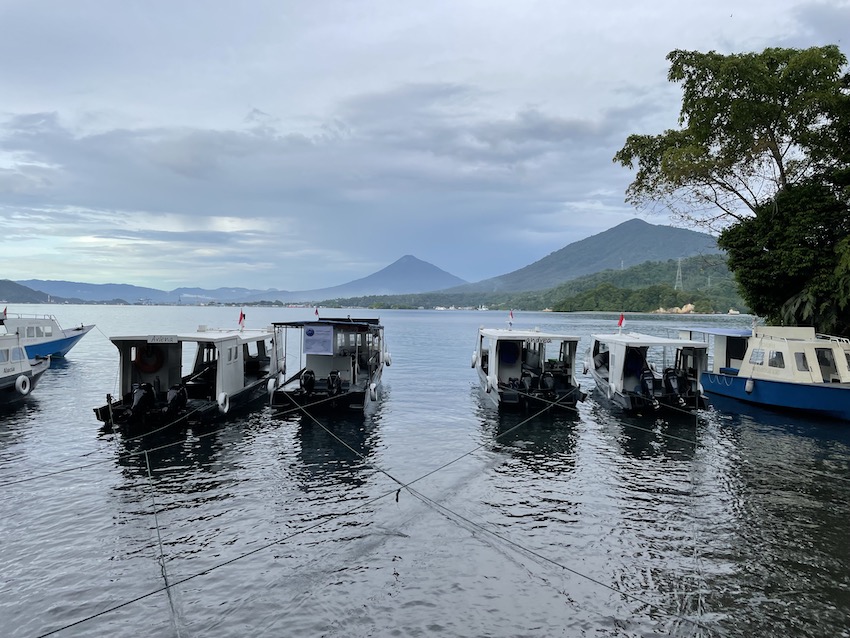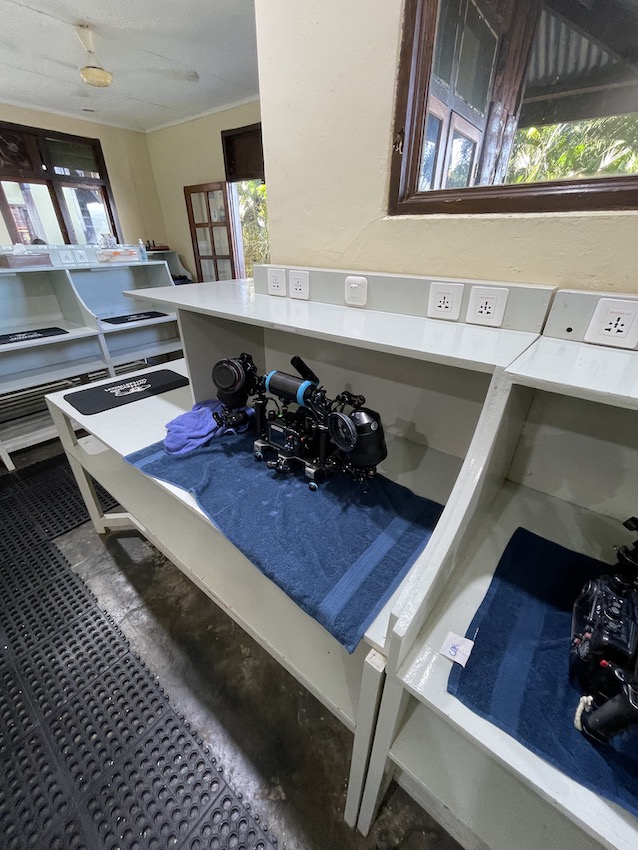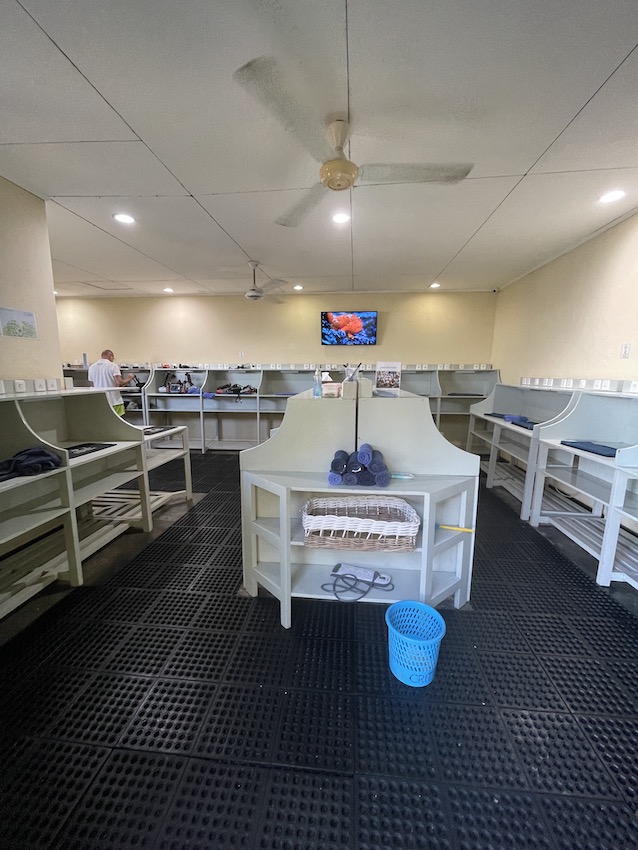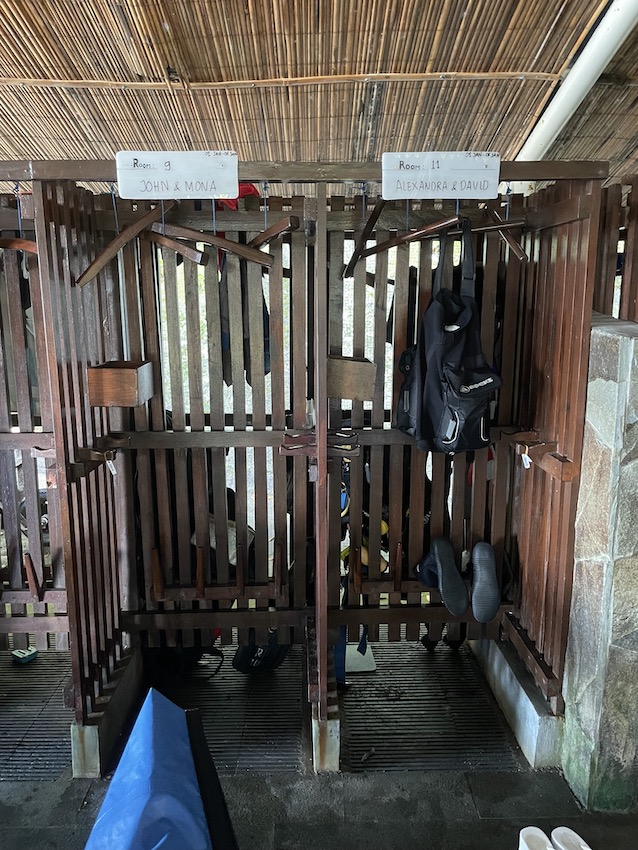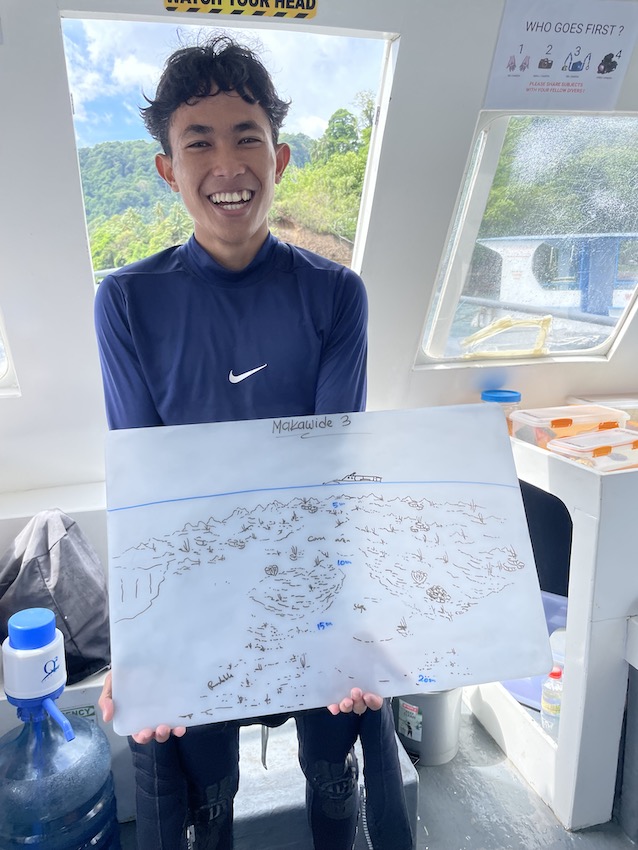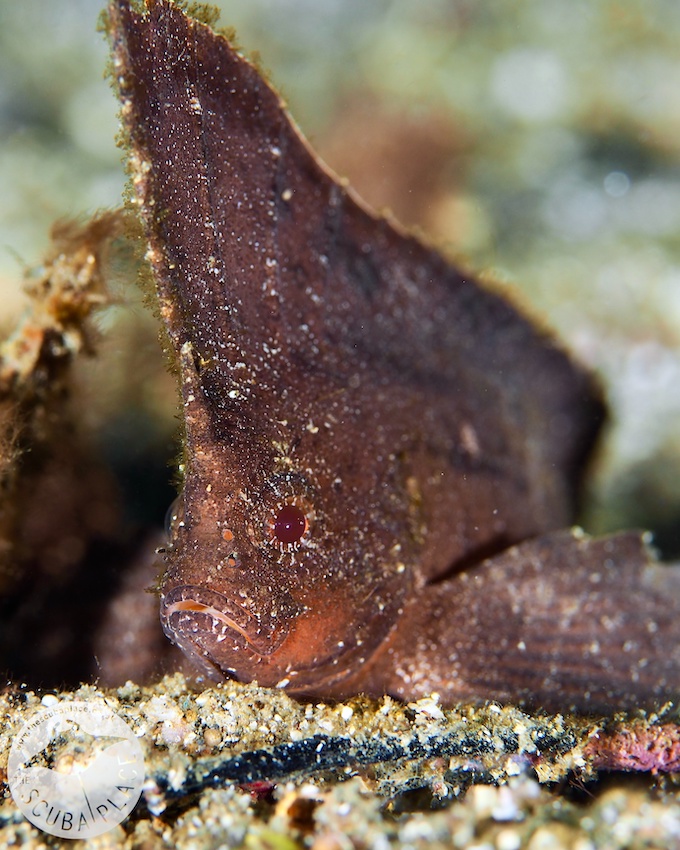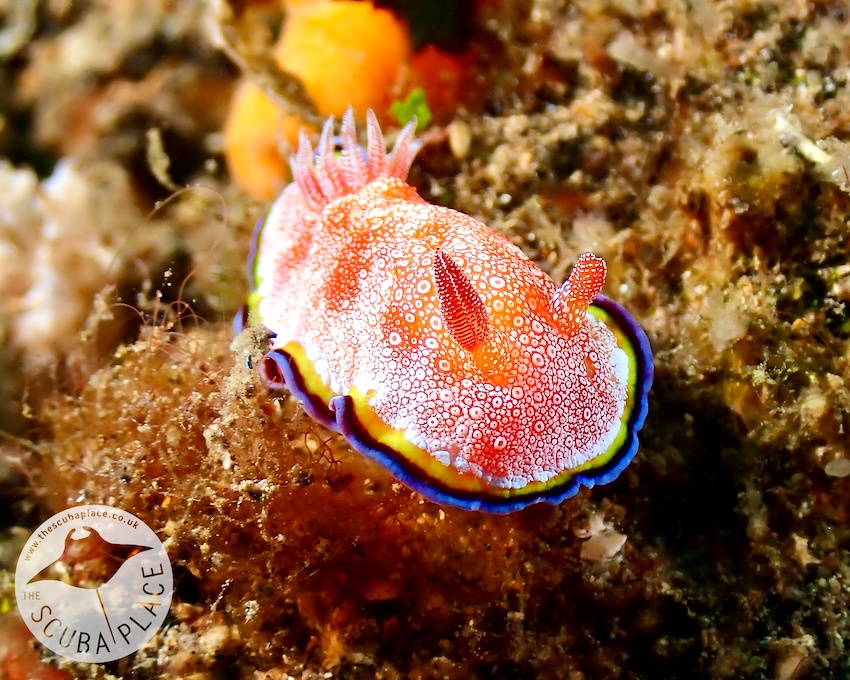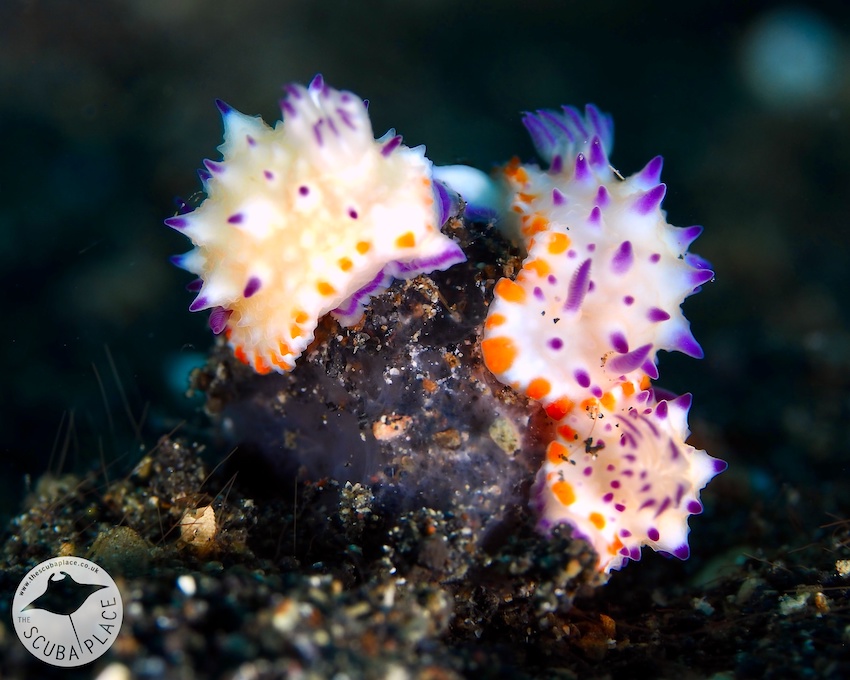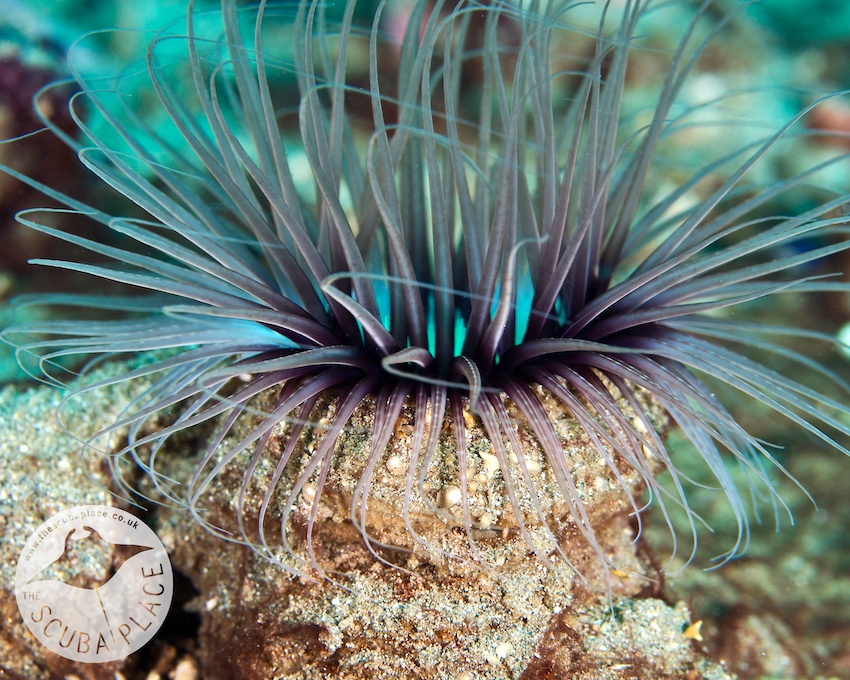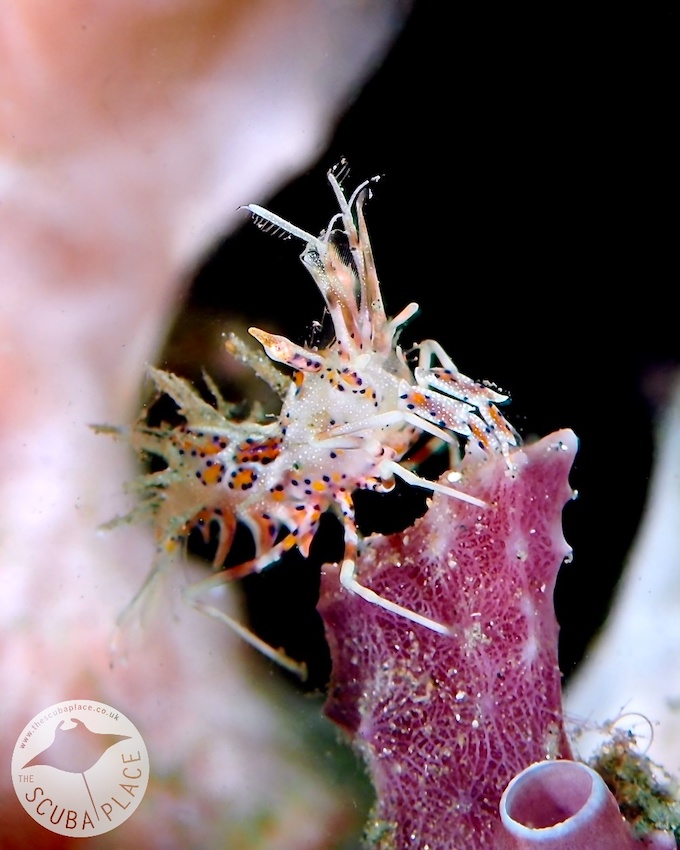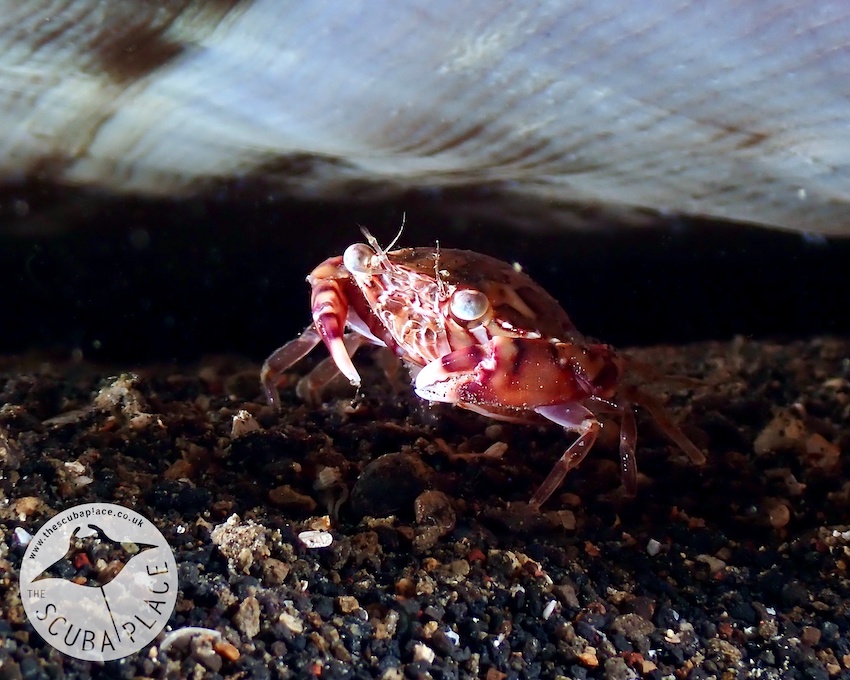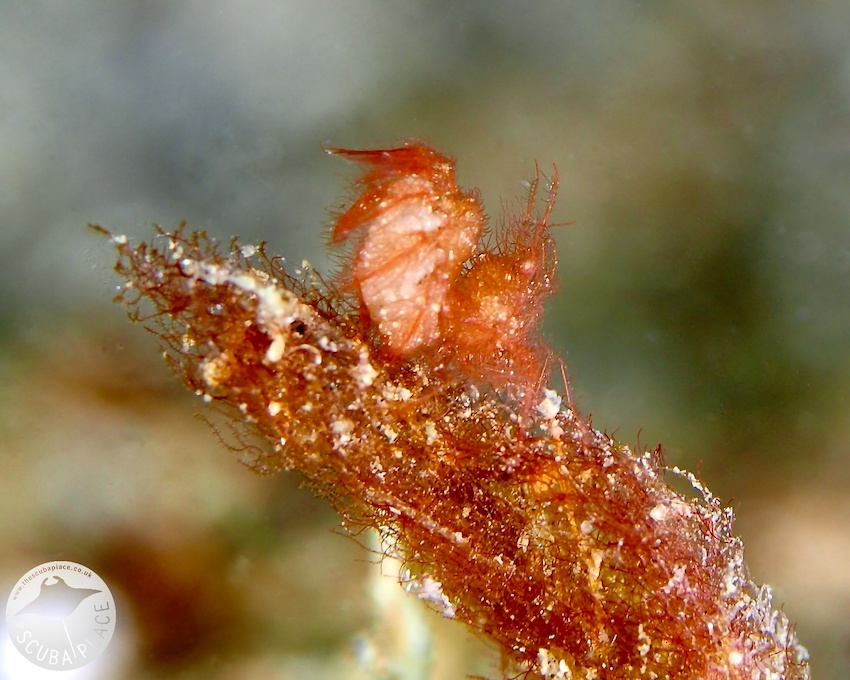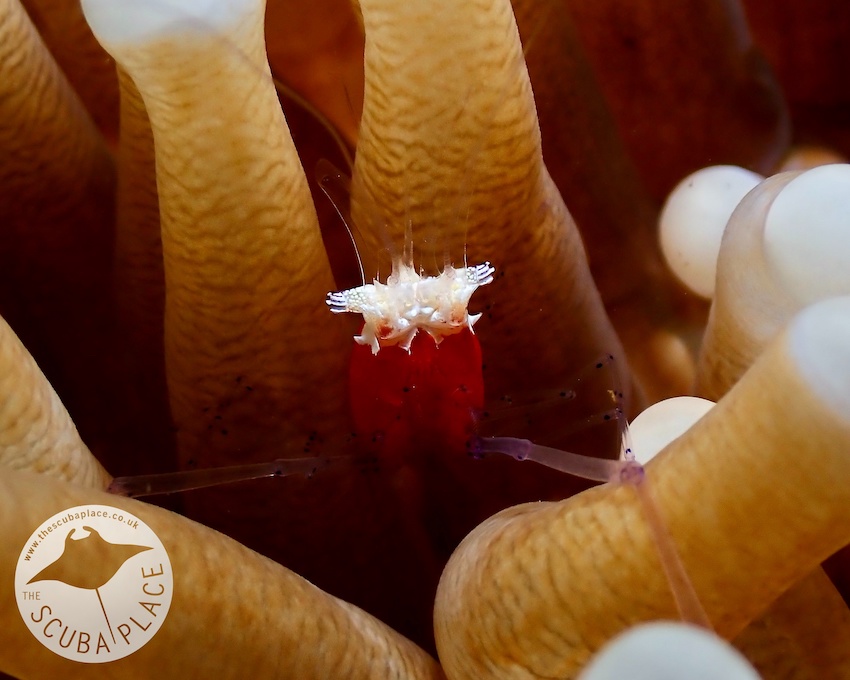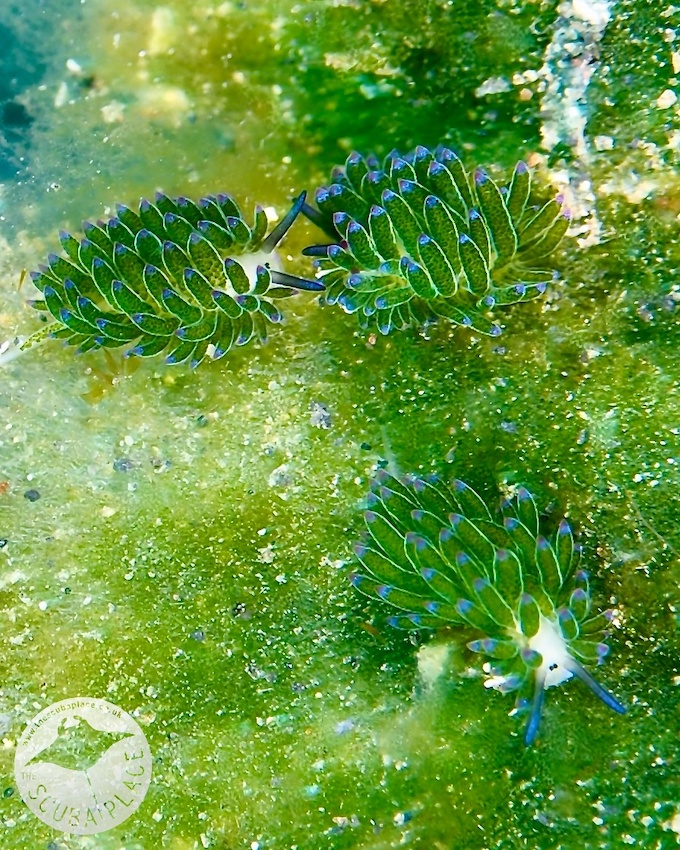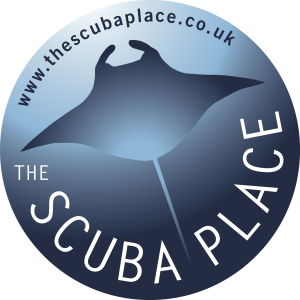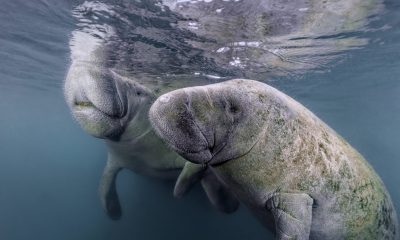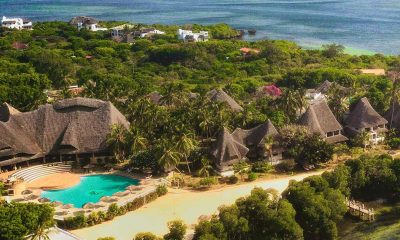Blogs
Dive Indonesia : Lembeh Resort Trip Report
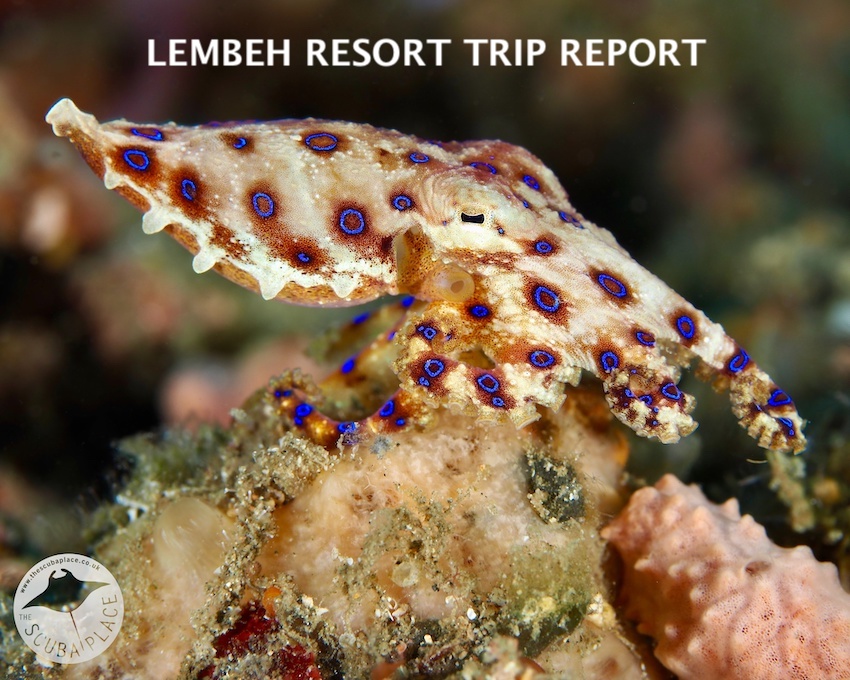
The Scuba Place spent January 2023 exploring four different resorts in Indonesia with a group of divers. This is Part One of their Trip Report on Lembeh Resort.
17,504 islands make up the nation of Indonesia, and it has the second largest coastline of any country – nearly 55,000 kilometres. The highest island peak, the youngest population on the planet, the largest volcanic lake, and over 700 languages and dialects are spoken. There are so many things that make Indonesia unique and special, and we spent the month of January exploring four different areas to see for ourselves some of what it can offer our clients.
Spoiler Alert – we bloody loved it!!
This recce was also one of our infamous Come Dive with Us hosted trips. New Year’s Eve was spent in Jakarta airport after having flown from London via Dubai. We watched the clock on the flight announcement board click over in a very quiet airport before boarding our final flight to Manado, the capital of North Sulawesi in Indonesia.
Slightly jet-lagged and mostly hot and sweaty, we were met at Manado Airport by the staff from Lembeh Resort, and a very nice air-conditioned mini-bus. We set off for a 40-minute drive across the island. The newly opened road makes this a very easy journey. The last leg of the journey was then a 15-minute boat ride on one of the resort’s dive boats, across the harbour and to the resort – a tiny bit of heaven in the beautiful landscape.
What first struck us was how very small the resort appeared – rooms dotted up and down the hillside, a dive centre with camera room – a PROPER camera room – and a central two-story building with reception downstairs, and the open-air restaurant upstairs. Lembeh Resort has a stellar reputation in the diving and underwater photography communities, so I suppose we can be forgiven for not realising how small and select this place is – with only 20 rooms (8 Premium Luxury Cottages, 5 Hillside Luxury Cottages and 6 Garden Rooms), even when fully occupied this is a very quiet and very special place!
Do the maths – 20 rooms (if full) so 40 people. MAXIMUM! With 5 huge dive boats, that’s 8 divers per boat, and with two to four guides per boat, this means very special, ‘privately guided’ diving! Our group had its own boat and 3 guides, sometimes 4, across the 9 of us. Complete with O2, life jackets, spare tanks and dive equipment, toilets, towels, cold water (and hot with tea and coffee on double tank outings) plus fruit and snacks, there isn’t much more than anyone could want from a dive boat. Easy access from the beach steps and dive centre, and the crew are the warmest and friendliest, and truly expert, people ever!
The dive centre area is well set up – a two-person open wardrobe with shelving and hanging for all things wet and dive related, big benches to sit on whilst kitting up, showers and even more towels – and being a mere waddle to the dive boats – this is some of the most civilised diving ever!
Cameras – it isn’t called Critters@Lembeh for nothing, and photography here is equivalent to F1 at Silverstone, Rugby at Twickenham and Cricket at Lords – this is THE place, so you would expect the facilities to be pretty spot-on, wouldn’t you? Expect a fully-fledged and secure camera room, with shelves above and below each camera desk, individual power supplies with adapters, camera towels and non-slip mats. Separate rinse tanks outside, airguns, together with the resident Backscatter Pro offering support, advice, spare parts and courses.
Our rooms were split across the group, with some in the beautiful Hillside Cottages. These really are on a hillside, and there are a good few steps up to them, but the climb is worth it! Beautiful with plenty of space, super-comfortable beds, lovely bathrooms, lots of storage and hanging space and spectacular views across the bay. Fluffy towels, shower gel and shampoo, conditioner and other such vanity items are provided.
Those of you who know me know that I am just a little bit broken from too many Saturdays spent on the rugby pitch in my younger years – therefore, we opted for a Garden Room. More a jungle than a garden, we were a stone’s throw from the main building, but nestled into the tropical greenery and both private and quiet. All the rooms are air-conditioned and have a fridge with snacks, plus bottled water and tea and coffee.
The open-air restaurant sits above the main reception area, and has huge vaulted ceilings with fans galore, keeping it as cool as possible. The food is fab – absolutely fab, and this comes from a self-confessed foodie!! Breakfast offerings included fresh pastries, fresh fruits, a range of cooked options (beans, mushrooms, bacon, hash browns, nasi goreng, noodles) and plenty of rijsttafel offerings too – Indonesian tapas for the want of a description. Overnight oats, fruit bowls, cold meats and cheeses and much much more – oh, and eggs too – omelettes to order and juices galore!
Lunch is a buffet offering with a huge array of choices. Salads, western style and local style foods, and a fresh ‘made to order’ station offering something different every day. Always a soup, and always a choice of desserts too, enabling you to make it as light as you want, or in my case, not! Dinner is very much an a la carte experience – a four-course menu every evening, offering again a great variety of local and Western choices.
And then there are barbecue evenings, afternoon snacks and some incredibly well-crafted cocktails, good wines and a selection of beers too, available at the Pool Bar or from the Restaurant. And in this day and age, it is important to note that all of the fish served is locally line-caught, vegetables and fruits are locally and organically grown by artisanal farmers, and any dietary requirements can be catered for by the Chefs.
So, in summary – a beautiful place, extremely well set-up, run and managed, lovely rooms with ‘to die-for’ views and some proper gourmet food……..lovely people, and big proper dive boats.
All that remains to tell you about is the diving!
Lembeh is well known as the ‘Critter Capital of the World’ so we went with a bucket list of things to see and tick off. We did a couple of boat dives each morning, and then hit the house reef shore dive in the afternoon – this was plenty for us, but more dives are available, and then there are night and dusk dives too!
We dived some beautiful reefs – typical structure was a plateau of coral reef, a sloping reef and down to a black sand sea bed for a bit of muck and critter-spotting. Both North and East Lembeh offer some stunning reef and pinnacle diving – lots of colourful corals and marine life, including sharks and other pelagics passing through, and we did a few very good dives like these, but, we were there for critters, so critter-hunting we went.
With both black sand and grey sand sites, offering totally different critters, we were spoilt for choice. Currents were gentle at their strongest (expertly selected by the dive boat captain) and the critter-spotting demonstrated by the capable dive guides was second to none. We could almost ‘order a critter’ in the dive briefing, and the guides would find it, although they did struggle with the request for a polar bear!
We saw pretty much everything we set out to see, and being in small groups, were able to relax and concentrate on taking photographs too. The list of critters is pretty endless, so here, we will let our pictures do the talking…
Lembeh is a VERY special place, and we are already planning a return visit. It really is that good!
Key Facts :
- Getting there : Flights with Emirates Airlines to Manado depart from any major UK airport via Dubai and Jakarta or Singapore Airlines via Singapore and Jakarta. On Emirates from London Heathrow it was a 7-hour flight with a quick two-hour layover in Dubai followed by an 8-hour flight to Jakarta. We had a longer layover in Jakarta so we booked a room at FM7 Hotel, a quick 20 minutes from the airport for a much-needed shower and a kip. The comfortable double room was £36 and offers a free shuttle to and from the airport. Our final flight on domestic carrier Garuda to Manado was 3 ½ hours. 30 to 35kg baggage allowance is typical.
- Air temperature : Tropical – average daily temperature throughout the year is 28-30°C, with the humidity at 85-90%. The rainy season is considered to be November to May with peak rainfall in January.
- Water temperature : 26-29°C. A 1-3mm full suit or shorty will suit most.
- Visa requirement : Tourist visa is purchased on arrival for £30 or IDR 500,000.
- Health protocols : When we travelled, visitors were mandated to download an app “Pedulilindungi”. This required us to upload our proof of COVID vaccination and booster and approval was received within 24 hours. Upon arrival, we provided a QR code generated by the app, had our temperature taken and then we were off.
- Currency : Indonesian rupiah, US dollars or Euros on resort. We often find the exchange rate is better at the destination country. ATMs and exchange desks are available at the airport. The resort also accepted credit cards to settle our bill quoted in rupiah.
- Electricity : 230V with European style (round pin) two-prong plugs. Our adaptor worked without issue, and the camera room had extension leads with UK plugs.
- Internet and Wi-Fi : Wi-fi is available at no charge at the resort. The best signal around the resort was at the restaurant.
Price Guide: Expect from £2499 per person based on two sharing a garden view room for a 7-night itinerary with full board and 10 dives. Return flights and transfers are included.
Our Advice: Stay as long as you can! With a long travel time consider at least a week or talk to us about adding on other Indonesian destinations. We travelled to Murex Bangka and Murex Manado Resort on the Passport to Paradise itinerary. Stay tuned for additional reports!! And with numerous routes from the UK to choose from, any duration can easily be arranged.
Extras :
- Tourist Visa : £30 purchased on arrival.
- Food & Drink : Speciality drinks, adult beverages, sodas and snacks at Lembeh Resort. Fancy coffees, milkshakes, sodas, beers, wine, and cocktails were always available and affordable. The mini fridge in the room had a selection of drinks and snacks and was refilled daily.
- Diving Extras : Three boat dives are offered daily along with the option to sign up for mandarin, dusk, night and blackwater boat dives. The house reef is available guided or unguided. We purchased a 2 dives/day package for our time at Lembeh and all options could be used. NITROX was an extra charge.
- Tips : We would suggest a minimum of £15 per day to cover the dive centre and resort staff. Individual tips for special service are up to you!
The Scuba Place designs and builds custom scuba diving holidays. With personal knowledge and experience diving in many of our destinations, there is no one better to help build your dream dive holiday. Come Dive with Us!
Call us at 020 3515 9955 or email at reservations@thescubaplace.co.uk
Find us on
Facebook : https://www.facebook.com/thescubaplace
Instagram : https://www.instagram.com/the.scuba.place/
YouTube : https://www.youtube.com/channel/UCH684OdioYirI-zzdT58Ceg
Blogs
Heading out on the water this Summer? Watch for manatees
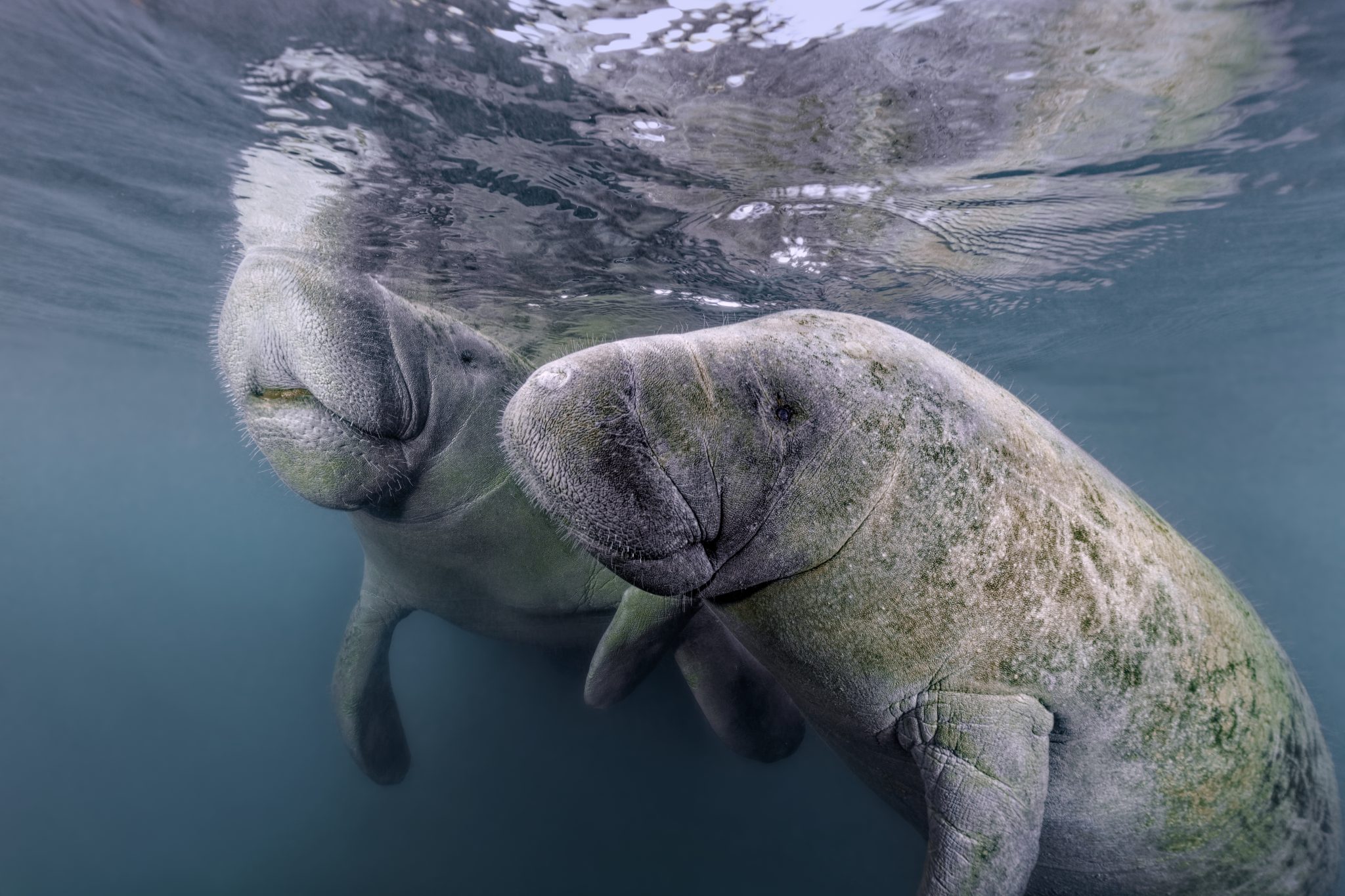
As National Safe Boating Week approaches, Save the Manatee® Club is urging boaters, and anyone that enjoys Florida’s waterways, to respect and protect the defenseless manatees that inhabit our shared waterways. From May 18 to 24, leading up to Memorial Day Weekend, the campaign aims to raise awareness about recreational boating safety and the importance of safeguarding imperiled manatees during the summer boating season. This week also emphasizes the importance of encouraging boaters to enroll in a boating safety course.
Manatees are semi-migratory marine mammals that are commonly found in shallow estuaries, bays, rivers, canals, and coastal areas throughout Florida and neighboring states. With some manatees venturing as far west as Texas and as far north as Massachusetts, collisions between these gentle giants and watercraft have become distressingly frequent. Boat propellers and high-speed collisions pose significant threats to manatees, often resulting in severe injuries or even death.
Save the Manatee Club is calling on all water enthusiasts to follow essential manatee safety tips to ensure the well-being of the imperiled manatee:
- Obey Speed Zone Signs: Familiarize yourself with and adhere to posted speed limits to prevent collisions with manatees.
- Reduce Glare with Polarized Sunglasses: Wear polarized sunglasses to enhance visibility and spot manatees below the water’s surface.
- Recognize Manatee Signs: Learn to identify signs of manatees in the area, such as swirls or flat spots on the water caused by their movements.
- Respect Manatee Sanctuaries: Keep a safe distance from posted manatee sanctuaries and avoid pursuing or harassing these marine mammals, as it is illegal and can disrupt their natural behaviors.
- Report Distressed Manatees: In Florida, promptly report distressed, injured, tagged, or orphaned manatees to the Florida Fish and Wildlife Conservation Commission (FWC) at 1-888-404-FWCC (3922). Outside of Florida, report sightings to the appropriate state agency or rescue organization. A list of agencies to contact is available at savethemanatee.org/report.
- Protect Seagrass Beds: Avoid boating over seagrass beds and shallow areas where manatees may be feeding. Stick to deep water channels while remaining vigilant, as manatees also utilize these channels during their travels.
- Dispose of Fishing Line Responsibly: Anglers should properly dispose of or recycle used fishing line to prevent entanglement hazards for manatees.
“Each year, National Safe Boating Week provides an excellent reminder for all of us to be aware that we share our waterways with vulnerable manatees,” emphasized Patrick Rose, Aquatic Biologist and Executive Director of Save the Manatee Club. “With the recent Unusual Mortality Event on Florida’s East Coast claiming an alarming number of manatees’ lives, it is more crucial than ever to prevent preventable deaths caused by watercraft collisions. By following manatee-safe boating guidelines, such as obeying speed zones and remaining vigilant for manatees, everyone on the water can contribute to the protection of these gentle giants.”
Save the Manatee Club offers a range of free materials to help safeguard manatees and raise awareness about manatee-safe boating practices. Shoreline property owners and park or marina managers can order aluminum dock signs to alert others about the presence of manatees in their areas. Boaters and paddlers can request packets containing a safety tips card, a waterproof boat banner, and a decal to display on their vessels, providing the number to report manatees in distress. To view and request these materials, visit savethemanatee.org/resources. Save the Manatee Club will also be hosting a live webinar for National Safe Boating Week on Tuesday, May 21st at 6pm EST. To register, visit savethemanatee.org/register.
Marine Life & Conservation Blogs
Book Review: Shells of the World

Shells of the World: A Natural History by M.G. Harasewych
Shells of the world is a guide to the world of marine, shelled molluscs. And what a varied and interesting world it is. Some of my favourite things to find on a dive are detailed in this book, including disco clams (or Electric File Clams as they are correctly names), the cephalopods, giant clams and sea hares. There are also many on my wish list, top of which is the Nautilus.
Each chapter provides a detailed description of the species, along with beautiful images. You can dive deeper and discover where they live, both with global distribution and the habitat they prefer. Learn about their diet, reproduction and diversity.
Having dipped in and out of this lovely book over the past few weeks, it has inspired me to learn more about this group of animals that we see on most divers, wherever we are in the world. Some of the shells are incredibly intricate and beautiful. I have always agreed with never collecting, or touching, marine life. The description of a certain set of cone shells should be a warning to those that are happy to pick up marine life! One of the cone shells has a local name called the cigarette snail. Why? Because once the venom is in your system from this animal, you only have time to smoke one cigarette before the affects of the venom are fatal!
What the publisher says:
Mollusks are invertebrate animals with a remarkable natural history and a rich fossil record, and their shells are prized for their breathtaking variety and exquisite beauty. Shells of the World provides a wide-ranging look at the incredible diversity of marine mollusks. An informative introduction outlines the lineages covered, followed by a directory section, split into classes, that profiles a broad selection of different taxa to give a sense of their sheer numbers and variety.
- Features hundreds of beautiful color photos, depicting both the live animals and their shells
- Discusses mollusk evolution, anatomy, life cycles, behavior, and ecology
- Describes unique characteristics, distribution, habitat, and size
- Provides valuable insights into the conservation of the world’s marine mollusks
- Ideal for malacologists and shell collectors everywhere
About the Author:
M. G. Harasewych is research zoologist emeritus and former curator in the Department of Invertebrate Zoology at the Smithsonian Institution’s National Museum of Natural History. A fellow of the American Association for the Advancement of Science, he is the author (with Fabio Moretzsohn) of The Book of Shells: A Life-Size Guide to Identifying and Classifying Six Hundred Seashells.
Book Details
Publisher: Princeton University Press
Hardcover
Price: £25
ISBN: 9780691248271
Published: 9th April, 2024
-

 Marine Life & Conservation Blogs3 months ago
Marine Life & Conservation Blogs3 months agoCreature Feature: Swell Sharks
-

 Gear Reviews4 weeks ago
Gear Reviews4 weeks agoGEAR REVIEW – Revolutionising Diving Comfort: The Sharkskin T2 Chillproof Suit
-

 Blogs2 months ago
Blogs2 months agoMurex Resorts: Passport to Paradise!
-

 Blogs3 months ago
Blogs3 months agoDiver Discovering Whale Skeletons Beneath Ice Judged World’s Best Underwater Photograph
-

 News3 months ago
News3 months agoPADI Teams Up with Wellness Brand Neuro to Drive Ocean Change and Create a Blue State of Mind
-

 Gear Reviews3 months ago
Gear Reviews3 months agoGear Review: Oceanic+ Dive Housing for iPhone
-

 Marine Life & Conservation2 months ago
Marine Life & Conservation2 months agoSave the Manatee Club launches brand new webcams at Silver Springs State Park, Florida
-

 Blogs2 months ago
Blogs2 months agoSeagrass Awareness Month brings critical food source for Manatees to centre stage


